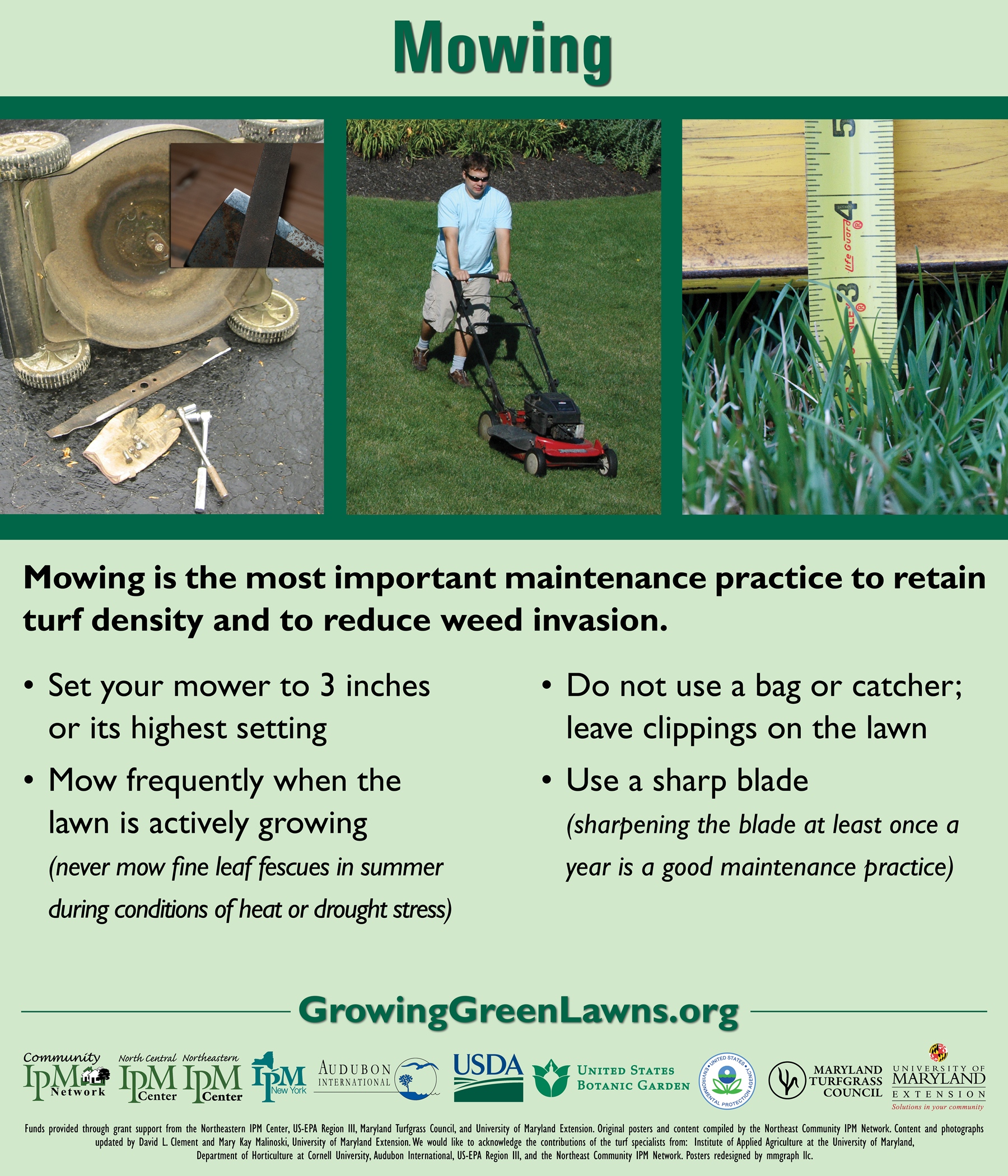Lawn Care Tip:
Save yourself a lot of raking, blowing and picking up leaves this fall. Leaves are a very valuable source of organic matter to improve the soil in a lawn and garden. Leaves that fall onto the lawn can be shredded with a lawnmower and left to decompose naturally on the lawn. These mulched leaves can be left in place if they don’t exceed 1 inch in depth. However, deep piles of leaves that are not removed for several days may smother and kill the lawn. If you don’t want to mulch them in place on your lawn use a grass catcher to collect leaves and then use them in the compost pile or to winter-mulch beds.
Sign up for the Sustainable Landscape Network's "Mow Right" Field Study here. For information about the study - click here.
For more lawn care tips, click here.
Mowing
Mow high, mow often, and leave the clippings.
Proper
mowing gives grass a competitive advantage over weeds and helps keep
your lawn healthy. It's the single most time-consuming lawn-care chore.
You may as well do it right!
How high?
For
a healthy, low-maintenance lawn, set your lawn mower to trim grass to a
3-inch height or higher. The key concept to keep in mind: The roots
underground mirror the shoots on top. The shorter you mow, the smaller
the root systems.
Small root systems leave your lawn more
vulnerable to drought, insects and invasive weeds. Short lawns also
require more frequent fertilization. Longer grass helps cool the soil
surface, reducing water loss from the soil and decreasing competition
from warm-season weeds, such as crabgrass.
How often?
Let the grass be your guide, using the One-Third Rule: Never remove more than one-third of the grass blade when you mow. That means that if you are cutting your lawn to a 3-inch height, you should mow before the grass is more than 4.5 inches tall. During the spring flush, you may need to mow every 5 days or less. During the summer slump, the interval may be two weeks or more. If you are cutting the grass shorter, you will need to mow more often.
When to start?
Start mowing in spring when the One-Third Rule says it's time: When the grass reaches 4.5 inches if you are maintaining a 3-inch cut. Stop mowing in fall as growth slows, usually about the time that the daily average temperature falls below 50 F for a week. Make your last cut about 20 to 30 percent lower than your normal mowing height to discourage matted grass and snow mold.
What about the clippings?
Leave
them. They do not cause thatch, contrary to popular belief. (Thatch
usually occurs only when turf is excessively fertilized and soil is
compacted, cool and moist.) If you follow the One-Third Rule, they won't
smother the grass plants. They will quickly dry out and work their way
down to the soil surface where earthworms will help incorporate them.
Mulching mowers chop clippings finely to speed the process.
The
clippings return nutrients to the soil, so you need to fertilize less.
They can also cool the soil and help it retain water. Do not blow or
leave clippings where they will wash into streets or sewer drains and
end up polluting our waterways. Clippings are high in phosphorus, a
major nonpoint source pollutant. If you have a lake, pond or stream on
your property, establish a natural buffer zone between your lawn and the
water. Allow the vegetation to grow long in the buffer so that
clippings don't get into the stream and it can filter out other
potential pollutants.
Anything else?
Keep your lawnmower blades sharp. Dull blades tear the grass instead of cutting it cleanly. The wounds cause the grass to lose more water, increasing irrigation needs or moisture stress, and also leave the plants more vulnerable to diseases.
For original article, visit Cornell Gardening Resources.
To register for the Sustainable Landscape Network's “Mow Right” - Proper Mowing Height Field Study, click here.




